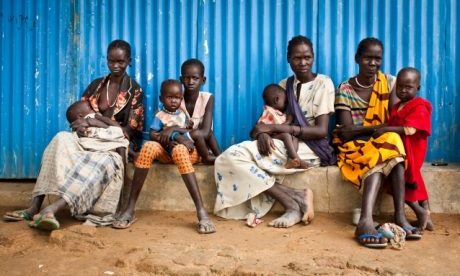Risky air drops and truck deliveries across some of the most dangerous roads in the world: To tackle what is currently Africa’s worst hunger crisis, the U.N. World Food Program is using all means at its disposal.
Every month, the agency moves more than 25,000 tons of food in its war on hunger.
In mid-April of this year, Asu Dennis Charles Lasuba, a member of the Kakwa people, decided he had to leave. There was nothing more he could do.
Fighters rallying behind former South Sudanese vice president, Riek Machars, had spread out across Kakwa territory in the southern part of the country.
In response, soldiers belonging to the government army advanced into the area and accused Lasuba and his people of cooperating with Machar’s rebels.
The soldiers began slaughtering members of the ethnic group and burning down their homes.
The violence turned 37-year-old Lasuba into yet another South Sudanese refugee.
Like 6 million of his compatriots who have become internally displaced or have otherwise suffered due to the almost four-year long conflict, Lasuba is now dependent on international aid.
After arriving in the Imvepi refugee camp just a few days after he escaped the violence, he described the fear that triggered his flight.
Like 1 million other people from South Sudan, he has found refuge in Uganda. The United Nations World Food Program (WFP) provides them with the rations necessary to survive: 2,100 calories per day.
But the amount of food that must be shipped to feed Lasuba and the other refugees in Uganda, as well as the 2 million internally displaced still in South Sudan, is enormous.
In 2016, the WFP bought more than 300,000 tons of sorghum, beans and oil for the South Sudan crisis alone.
When it comes to food purchases, there is but a single rule the WFP follows: Supplies must always be bought at the lowest price possible.
Because that sum is a combination of the purchase price and transport costs, sacks of grain sometimes travel huge distances across circuitous routes before they end up in the gigantic depot in eastern Uganda for deployment in the South Sudan crisis.
Is the price of corn currently low in Mexico? Is it cheap enough that the amount saved justifies sending it halfway around the globe? If it is, WFP will buy it. Continue reading
Sources
- Spiegel Online
- Image: Jamii Radio
